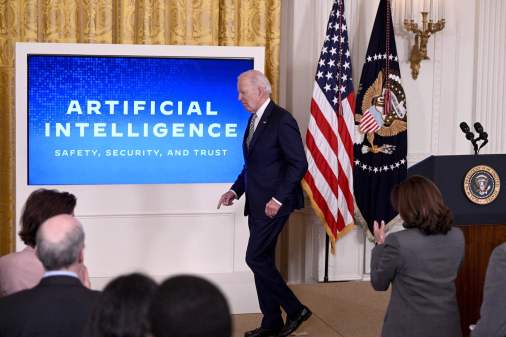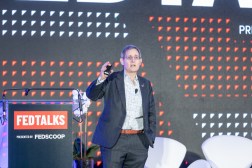Be it deciding between issuing a device or allowing employees to bring their own, or moving agencies’ data centers to the cloud, a group of public and private sector IT professionals said real change will come to federal IT when the government recognizes today’s work culture is changing as quickly as technology is improving.
More than 350 IT professionals attended Citrix’s Mobility 2014 conference Tuesday to talk about what agencies are doing to integrate new technologies and how agencies are moving past the PC-era.
While most of the panel participants were content with how their agencies have evolved in the past few years, some spoke of broader problems that ultimately effect how technology is implemented throughout government.
“I think we still have that culture clash that’s still sort of evolving between the older folks that are very happy with their PC at their desk and the other folks that are coming in who’ve grown up in a wireless environment,” said John Skudlarek, deputy chief information officer at the Federal Communications Commission. “If you have a variety of choices and they all work for you, so much the better.”
Skudlarek was joined by Robert Bectel, chief technology officer and senior policy advisor for the Energy Department’s Office of Energy Efficiency and Renewable Energy, who said he is trying to change the way his workforce operates as technology continues to evolve.
“We want folks to be able to do their job,” Bectel said. “We are looking for a way to migrate the workforce of our fathers and mothers to the workforce of our daughters and sons.”
Bectel highlighted the way he witnesses millennials using a number of different platforms and applications throughout the workday as a way the government can move forward in terms of mobility.
“I want that ability of being able to say ‘Okay, Glass, Google heimlich maneuver’ and it’ll tell me how to save someone if they are choking on a chicken bone,” he said. “I want that ability for my son when he comes to work in the federal service to be able to say ‘okay, whatever device is big 20 years from now, do this’ and have it be there.”
What Citrix put on display Tuesday — tools for the next-gen workplace, datacenter consolidation and mobile device management — are products that many government IT personnel have been asking for and are aware of. However, Tom Simmons, a public sector vice president for Citrix, said the next hurdle is implementation.
“The long pole in the tent today is not really the technology,” Simmons said. “The technology that we have to offer, that some of the other folks in our space have to offer, can do 80 percent of what the government says they want to be able to do five years from now. But it’s the traditional ways of doing things.”
One traditional yet necessary impediment to the deployment of new technology is security. An event panel Tuesday spoke at length about what needs to be done to protect data at rest — be it data on BYOD devices or that which is stored in the cloud — and how technological expectations can be managed against the reality of what’s truly possible.
“One of the bigger things, especially about the new generation that’s coming in, is that they need to understand why things are,” said Christopher Green, a systems engineer with PCI Strategic Management. “There is no security plan in the world older than three years that even has the word ‘mobility’ in it. They were lucky to get BlackBerrys, and that’s no longer enough. You need to start meeting people halfway, and at the same time, put it onto the younger generation to be able to work with security to point out where things can be improved and can be compromised.”
“In any technological innovation, you’re going to find where things are going to change and not all of the changes are going to be welcome,” Skudlarek said. “Naturally, we’re still very concerned about the security of our data, and at the same time, we want it to be as widely available as we can make it within our business model.”
Simmons said for the government to adapt to emerging technologies, they should embrace a “rush to failure” mentality that is widely used in successful Silicon Valley-based companies.
“Follow Google’s methodology of putting something in a sandbox, getting it to break and figuring out where the breaks are, and then put it into production so long that you are not compromising security,” Simmons said. “But if you ‘rush to failure’, find the breaks and then manage around that, you’ve got a far more flexible infrastructure at far lower costs. It’s those kind of visionaries that are going to move government to the next generation of computing technology.”
Despite the hangups, be it bureaucratic, generational or otherwise, the federal IT professionals who spoke Tuesday know changes are imminent, with or without growing pains.
“We won’t be buying anymore PCs,” said Skudlarek. “We will be moving much more toward a tablet, mobile, wireless-distributed environment. That’s where everybody is going.”






